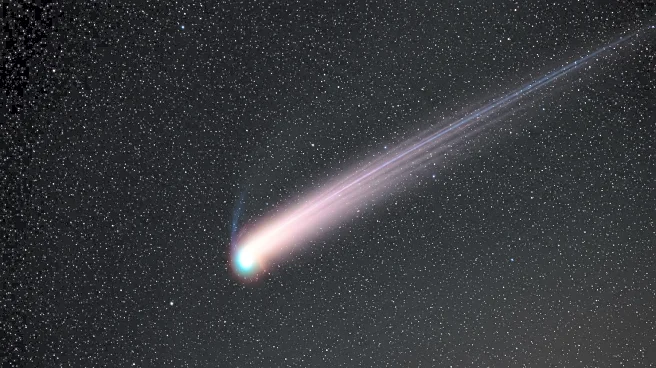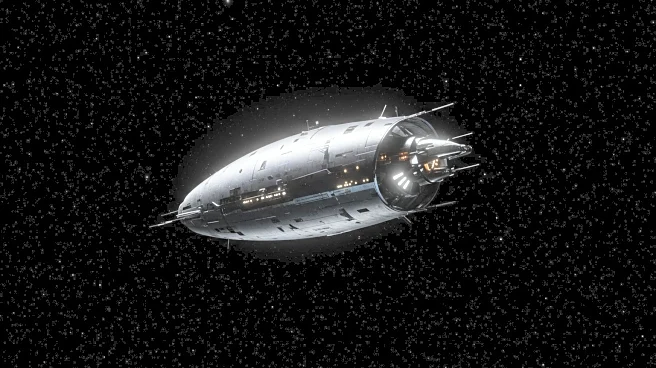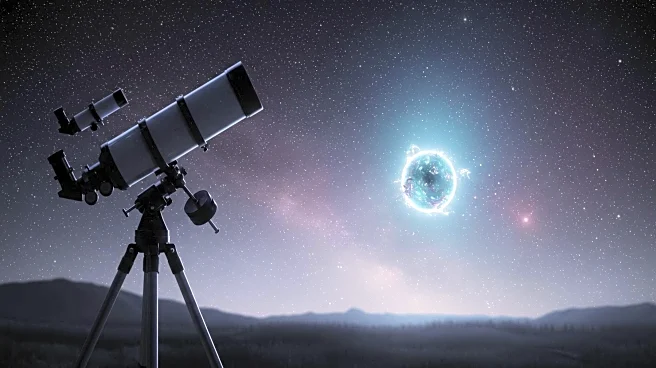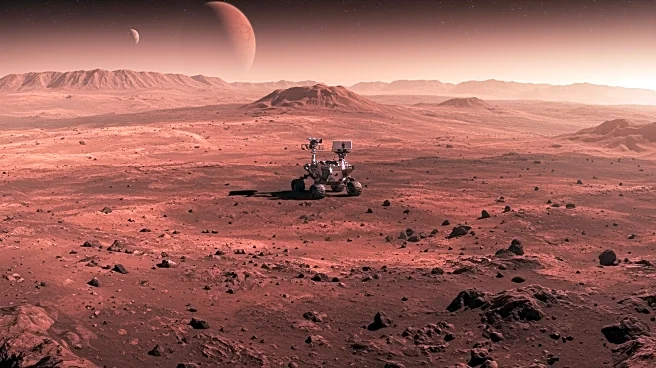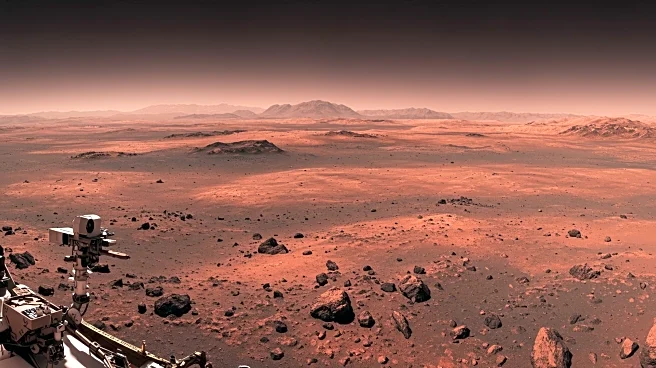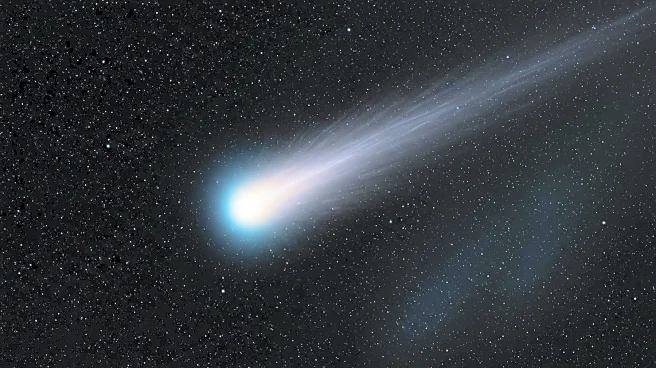What's Happening?
Comet 3I/ATLAS, an interstellar object discovered by the Asteroid Terrestrial-impact Last Alert System (ATLAS) in Chile on July 1, has sparked widespread speculation on social media about its potential as an alien spacecraft. These theories have been fueled by Harvard astronomer Avi Loeb, who has previously suggested that interstellar objects could be alien technology. However, scientific evidence indicates that 3I/ATLAS is a natural comet, as demonstrated by images from the Hubble Space Telescope showing a dust plume and tail. The comet will not pass close to Earth, with its perihelion occurring near Mars on October 29.
Why It's Important?
The speculation surrounding 3I/ATLAS highlights the ongoing public fascination with extraterrestrial life and the impact of social media in spreading pseudoscientific theories. While such claims can capture public interest, they often overshadow legitimate scientific research and discoveries. The debunking of these theories by astronomers serves as a reminder of the importance of critical thinking and evidence-based science. It also underscores the need for scientists to effectively communicate their findings to prevent misinformation.
What's Next?
As 3I/ATLAS approaches its perihelion, astronomers will continue to study its trajectory and characteristics to gather more data on interstellar comets. This research could provide valuable insights into the composition and behavior of such objects, contributing to our understanding of the solar system and beyond. Meanwhile, the scientific community may need to address the spread of misinformation by engaging more actively with the public and media.
Beyond the Headlines
The debate over 3I/ATLAS reflects broader cultural and ethical questions about the role of scientists in public discourse and the responsibility of media platforms in curbing the spread of false information. It also raises concerns about the potential consequences of pseudoscience on public perception of legitimate scientific endeavors.
